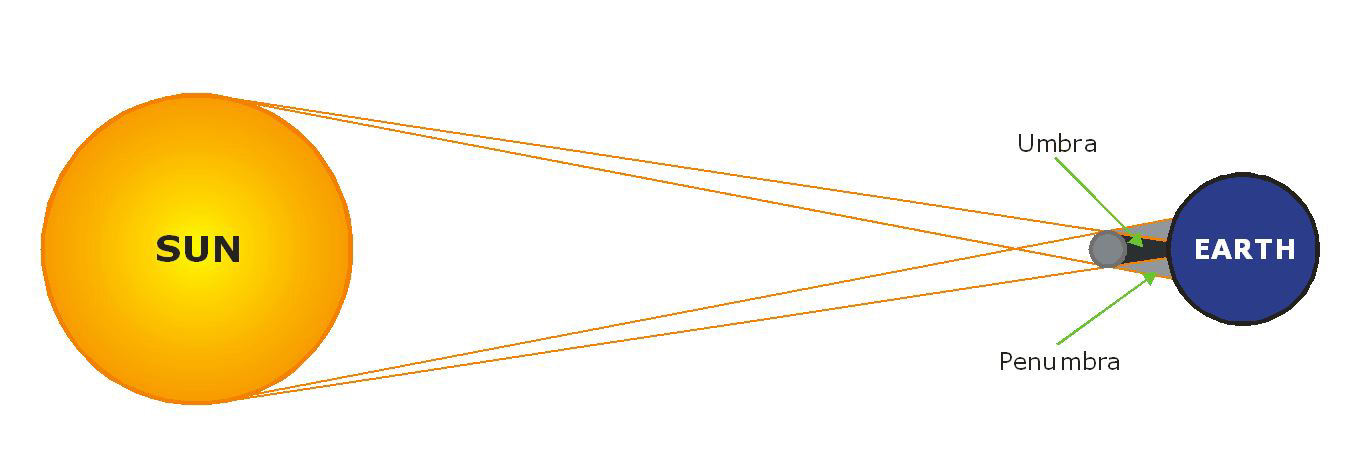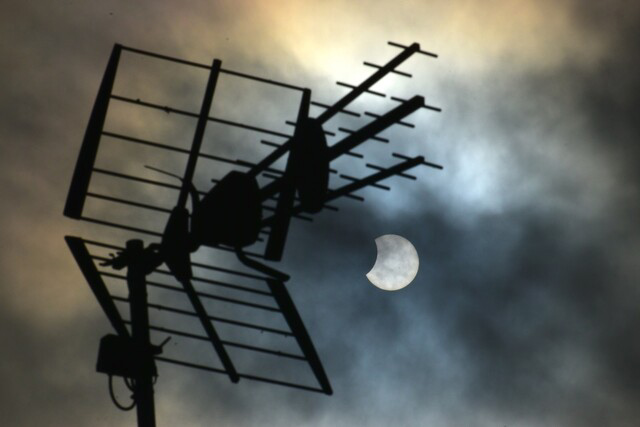 25/10/2022 - partial eclipse (Ray Emery)
25/10/2022 - partial eclipse (Ray Emery)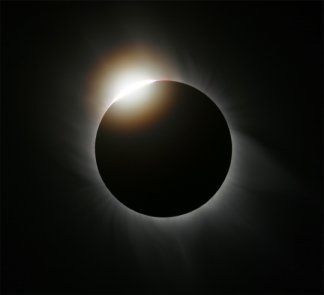 29/03/2006 - Turkey (Diamond ring - 2nd contact)
29/03/2006 - Turkey (Diamond ring - 2nd contact)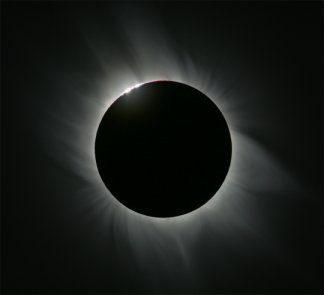 (Baily's Beads 2nd contact)
(Baily's Beads 2nd contact)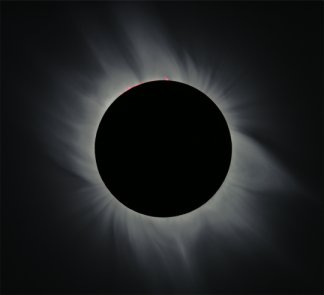 Corona & Prominences - 2nd contact
Corona & Prominences - 2nd contact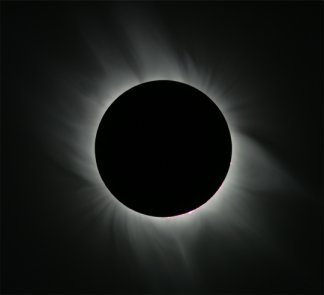 Corona & Prominences - 3rd contact
Corona & Prominences - 3rd contact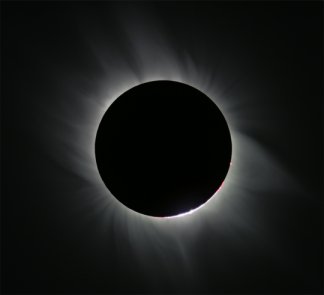 Baily's beads - 3rd contact
Baily's beads - 3rd contact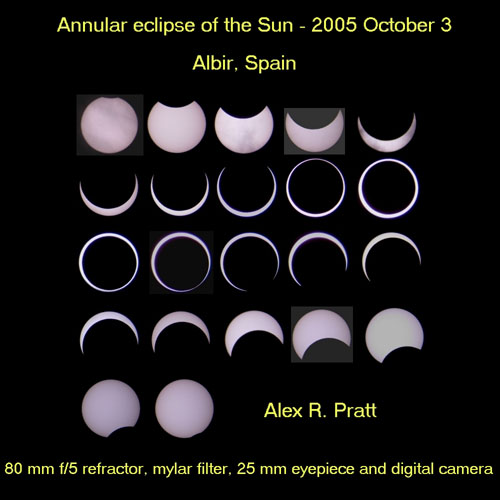
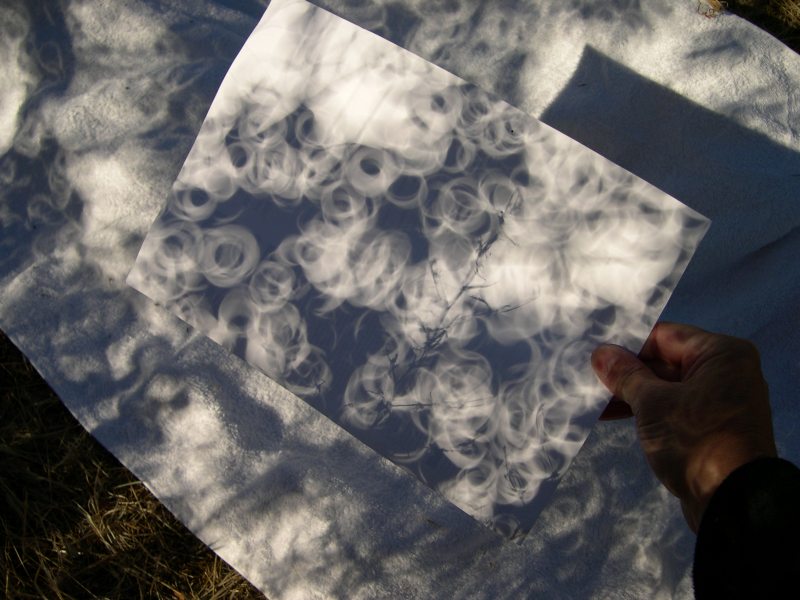 Pinhole Image
Pinhole Image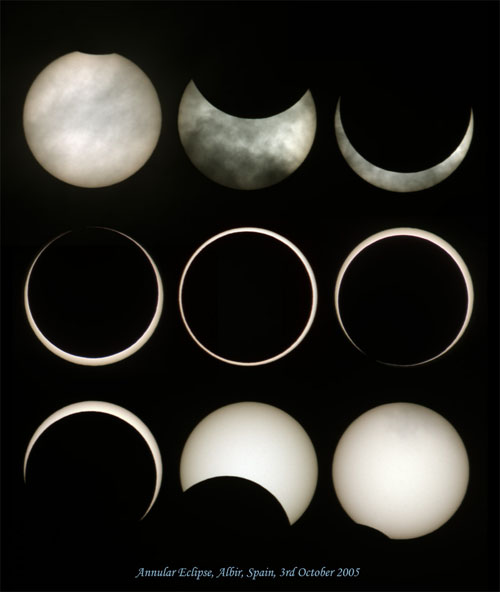 (Tony Cook)
(Tony Cook)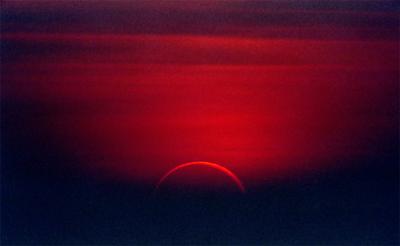 31/05/2003 - North Sea Coast
31/05/2003 - North Sea Coast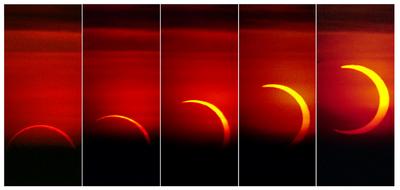
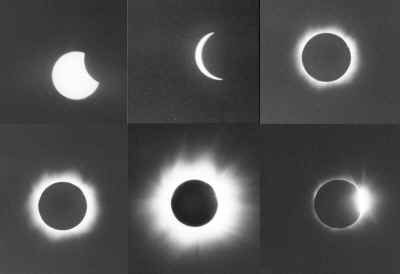 22/08/1999 - Cape Shabla (Bulgaria)
22/08/1999 - Cape Shabla (Bulgaria)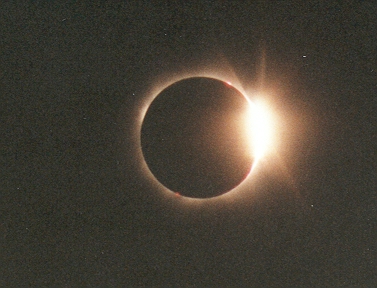
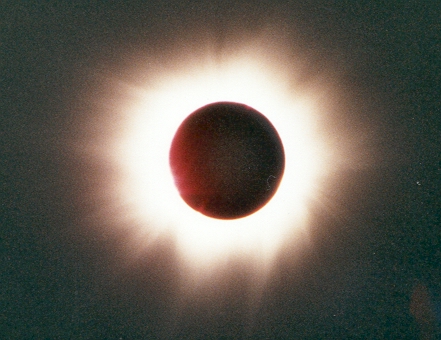
Information...
Solar eclipses occur when a 'new' Moon is aligned directly between the Sun and the Earth, so that part of the Earth is within the Moon's shadow. When the observer is in the full shadow of the Moon, in a region called the umbra, they will experience a Total eclipse. Outside of this region, where sunlight is only partially blocked, a Partial eclipse occurs, and the area is called the penumbra.

Although we see the new moon (roughly) every fortnight, the Moon orbits the Earth at an angle of about 5° from the ecliptic (the earth's orbital plane around the Sun). During most new moons, the Moon's shadow therefore passes above or below the Earth and it is only when the new moon coincides with the Moon crossing the plane of the Earth's orbit, that we get a Solar eclipse. This means that Solar eclipses are fairly rare and only occur 2-5 times a year, with no more than 2 Total eclipses per year.
At an particular location, Total solar eclipses are even rarer because the shadow from the Moon only obscures a small section of the Earth. We are however quite fortunate to see them at all, as it's only by coincidence that the Sun, which is 400 × the diameter of the Moon, is also 400 × the distance away from Earth. i.e. From our viewpoint on Earth, they both appear to be same size in the sky. Consider that even though there are well over 150 moons in the Solar system, only our Moon is the right size & distance to create a Total eclipse.
The elliptical nature of the Earth and Moon's orbits also affect how eclipses appear. When the Moon and Earth are furthest apart during an eclipse, the Moon doesn't appear sufficiently large enough to completely cover the Sun and we get an Annular eclipse. In totality the Sun then appears as a ring.
During a Total or Annular eclipse the point where the Sun and Moon first appear to meet is known as 'first contact'. When the Moon is completely in front of the Sun, 'second contact' occurs and and totality begins. A 'diamond ring' effect is seen as the the Sun's photosphere is nearly obscured. There then follows a phenomena called Baily's beads, where the rough topography of the Moon allows 'beads' of sunlight to shine through in gaps at the edge of the Moon. In some photographs, you may also see hints of red prominences at the edges of the Sun, plus the outer corona. As the eclipse continues, the Moon then reaches the other side of the Sun & 'third contact' is achieved. The sky will then gradually brighten again, until the 'fourth contact' when the Sun is once again fully visible.
In the UK the next total solar eclipse will not occur until 23rd September 2090... but there will be a 91-96% partial eclipse in the UK on 12th August 2026.
For much more detailed info. see the Wikipedia entry.
